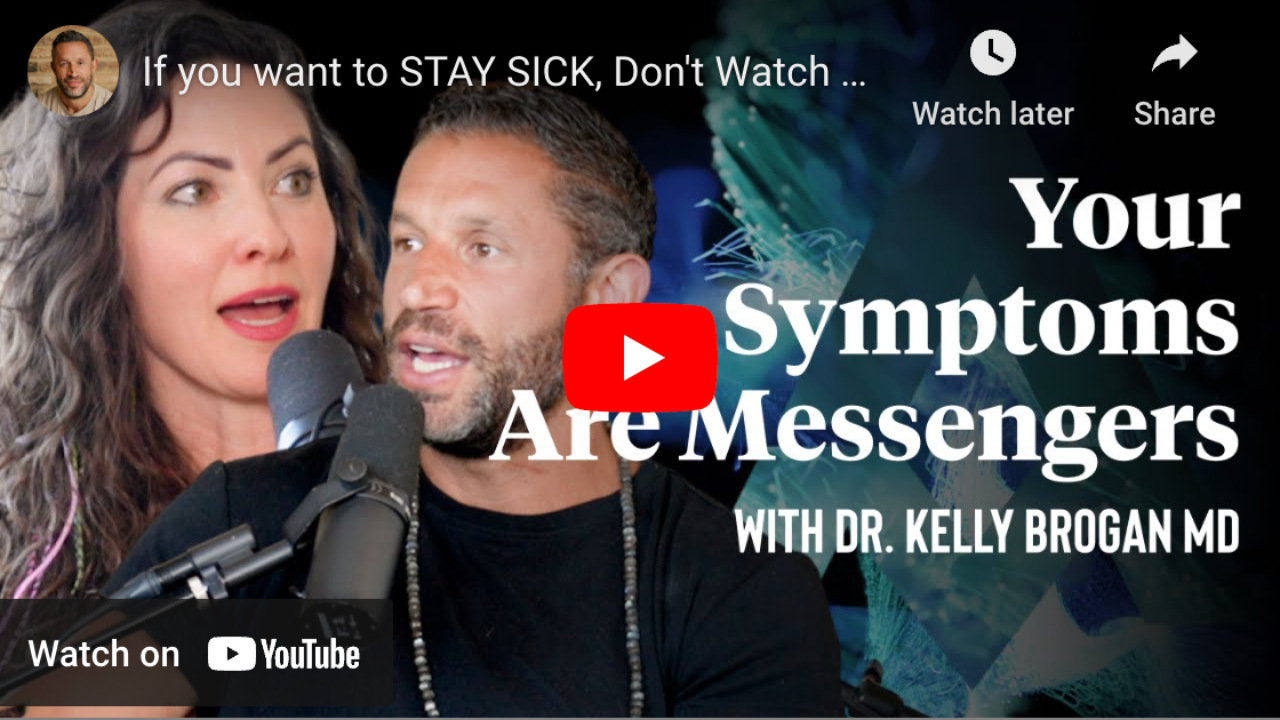Why "Being Emotional" Is Actually Good For Us, Our Children, And For Our Species As A Whole

In our culture, emotions are often seen as a nuisance, something to get over or around. Even worse, having emotions -- other than a select few positively-associated ones -- has been seen as a weakness, something that we should be ashamed of and must work to conceal. It may, therefore, come as a surprise to many of us to learn that emotions are the key to a fully developed brain and a fully realized life.
The emotional brain, the part that governs emotional experience, acts as a gatekeeper that decides whether we live individual moments from our reptilian brains, thrashing about to achieve basic security, or from our upper brains, skillfully navigating with logic and compassion. In other words, awareness and support of emotional processing can make the difference between merely surviving, and fully thriving. And perhaps more importantly, our emotional brain is also responsible for connecting us with others. The aspect of human existence that makes it all worthwhile -- deep, meaningful relationships -- is only possible with a robust and healthy knowledge of emotions and how to work through them, not around them.
We want our children to live the fullest lives possible. We don’t want them barely scraping by, clawing their way through a base and limited experience. We like to imagine them with robust brains capable of soaring to the highest heights. In this light, we want to teach emotional literacy with as much devotion as we teach reading, writing, and arithmetic.
How?
Model
Emotional literacy is not learned via pen and paper, or lengthy lectures by mom and dad. Thanks to mirror neurons, if we model healthy emotional expression our children will learn to do it as well. This means: identifying frustration when the garbage cans block the driveway, expressing nervousness and insecurity when it bubbles up before a holiday party, no longer saying: ”I’m fine.” when really we’re worried or mad, and no longer waiting to shed tears when alone.
We want to protect our children. Tax bills, divorce, world wars, and scary politics do not belong in the realm of the innocent, it’s true, but living our emotional life out loud does not mean always revealing the adult material behind our woes. We can express sadness, anxiety, anger, disappointment, or fear without sharing age-inappropriate details.
“What’s wrong Mama?”
“I’m feeling anxious about a few things.”
“Oh. You’re crying?”
“Yep. I feel sad and nervous right now.”
“Are you okay?”
“I am okay. I’m taking good care of myself and good care of you, and I’m sad and nervous at the same time.”
A parent that hides emotion, blames emotion on others, explodes suddenly with pent up emotion, or one that runs away from emotion -- into their phone, or room, or work, is damaging. A parent that cries when they are sad, names their emotion, and continues to care for themselves and others is an emotional leader. This kind of modeling wires a child’s brain to effectively use their emotional brain, the most efficient and powerful way to manage the ups and downs of life.
Don't Fix
When our children are upset we find ourselves willing to do almost anything to make the crying or the screaming stop. Even when it’s only a mild upset, we immediately look for how we can remove it instead of moving through it.
“(Crying) Mom!!!! I dropped my cookie and the dog ate it!! Dumb dog! Waaaaaah!”
“Oh honey! It’s okay! Honey, stop crying! We have more cookies. Look! Here’s a new cookie! Really, it’s ok. It’s not a big deal.”
Sometimes the crying stops with a new cookie, but often it doesn’t. We scratch our heads, roll our eyes, chalk it up to exhaustion or the “terrible twos”, maybe we even get mad and rescind our offer of a replacement.
When the upset doesn’t stop, even though we’ve come up with a perfectly logical solution, it’s confusing, until you understand how emotions work. Feelings don’t get fixed. A feeling arises, the upper brain notes it, and because the upper brain doesn’t do emotion, it shuts down and sends processing to the emotional brain. The emotional brain checks to see if the environment is safe (meaning there is a trusted person willing to hold space for the emotion), and if it is, the emotion surfaces, is processed, and then drifts away.
When we come at emotional situations with logical solutions:
- Dog ate your cookie? Get another!
- No friends at school? Ask someone to eat lunch with you!
- Your sister has the water bottle you want to use? Take turns!
...the emotional brain gets very agitated. It’s like shouting Chinese to someone that speaks French, it’s simply the wrong language. It comes across as antagonistic, not soothing and safe. When emotional safety is lacking, the emotional brain shuts down and let’s the lower brain literally duke it out.
We want our kids to become emotionally literate. So we want to get comfortable with our discomfort when they are upset. We want to remember that emotion is a friend not a foe, and prove that to our kids by not pushing them to avoid emotion with logical fixes.
Connect
So if we aren’t troubleshooting the issues that seem to be causing our children so much pain, what are we doing? We’re providing that key piece mentioned above: emotional safety. It sounds complicated but actually it’s extremely simple. The first step is to notice an emotion, name that emotion, and express understanding for that emotion. In practical terms it looks like this:
Notice: “Dog ate your cookie?”
Name: “Shoot! Do you feel mad?”
Understand: “Darn it! That’s not what you wanted!
Notice: “You don’t feel like there is anyone to hang out with at school?”
Name: “Do you feel lonely?”
Understand; “Bummer, that makes sense. It feels good to be with people you enjoy.”
Notice: “Your sister has the water bottle you want to use?”
Name: “I see. That can feel frustrating, huh? You both want the same one.”
Understand: “Shucks. You were really wanting to use that.”
Leave space around the emotion. Ask open-ended curiosity questions like: How long have you felt this way? Have you ever felt this way before? Where do you notice it in your body? Let them describe the emotion to you and empathize some more. Augment the sense of emotional safety with additional connection such as eye-contact, proximity, and touch.
The last ingredient is time. Even with a connective response, it can still take anywhere from thirty seconds to an hour and beyond -- depending on the intensity -- for an emotion to express and for neurochemistry to shift. When emotional regulation is reattained, the emotional brain opens that golden gate and allows processing to move into the upper brain. Only when the child has regained access to their upper brain, does it make sense to troubleshoot the issue at hand, because only then will they have access to logic and problem-solving faculties.
Children’s brains aren’t developed enough to do this sort of processing of emotion on their own. They need us to walk with them through their emotions again and again. With practice their brains will hard-wire for this activity and they will no longer need us as guides.
When?
Emotions happen all the time because life happens all the time.
Sometimes we forget to send an important email, or we step in dog poop, or accidentally lock the keys in the car. These are perfect opportunities to model healthy emotional expression. Simply notice the arrival of the emotion, and name it. Modeling this sequence is powerful enough to set up a strong foundation for emotional literacy.
Sometimes our child loses their teddy bear, hates what’s for dinner, gets shampoo in their eyes, isn’t invited to a birthday party, or rips the seat of their jeans in algebra. These are perfect opportunities to stop yourself before you suggest brilliant solutions to their problems, or try to reassure them the issues aren’t anything to be upset about. These moments are ideal for helping them name those emotions instead, to nod understandingly and rub their backs, to connect with them until the emotions lose their grip.
(Once everyone is back in their upper brains you can still discuss where to look for the teddy, how to avoid shampoo in the eyes, different friend-making strategies, jean patching, and other solutions, but not before!)
Emotional interactions are not something to be saved up or scheduled on the calendar. If our children are to grow dynamic and powerful emotional brains these conversations should happen at least daily.
Why do we find something so simple so hard?
The majority of us did not receive this kind of emotional training as children. By watching our parents we learned strategies like stoicism, avoidance, achievement, and blame as ways to work around having feelings. We learned this subtly via body language and adult conversations, and also explicitly when we were punished for crying or lauded for being brave. We became neurally wired to hide emotions, overpower emotions, and avoid emotions, not to tenderly walk through them.
Later, we began noticing that most of our inherited childhood strategies simply don’t work. We were still feeling uncomfortable emotions and figured something was wrong with us. Many of us sought therapy and wrestled with our shame, convinced we were different from others, broken. Many of us were diagnosed with conditions and medicated. Our awareness of our emotions became dulled. We lived a flatter life, but at least we weren’t experiencing as much pain.
Now, embracing emotion feels challenging because we simply aren’t wired for it and have no practice with it. It’s like suddenly realizing we have another limb. We’re awkward and unskilled with it. The good news is that our brains are plastic -- they can change -- and brains are affected by one another. Each time we help our children to notice and name their feelings, each time we help them feel understood, our brains also receive that benefit. As we help our children to become emotionally literate we rewire our own brains for the same.
What if we don’t have children?
Many of us come up against this sort of thing because we have children and they have emotions all the time, so we have no choice but to get involved at some level. In many ways this is the greatest gift children bring us -- an engagement with our own emotional terrain that we otherwise do our very best to avoid. But that emotional terrain exists whether or not we have kids. The good news is everything we offer them in the name of emotional support we can offer ourselves.
Don’t fix. When you notice anxiety, or frustration, or anger, stop yourself before you make a to-do list, start an internet search, or schedule an appointment. Remember feelings don’t get fixed. Whatever solution you think you may find is only an illusion, the feelings will simply wait for the next trigger, getting more potent all the while. Instead take some time, notice and name the feeling.
Connect. We tend to think that we need other people in order to experience connection, but self-connection is also very powerful. Offer yourself empathy for your emotional experience. Nurture yourself like you would a newborn -- with a warm blanket, a gentle hand on the back of your neck -- not as a way out of the emotion, but to give yourself the stamina and courage it takes to be with an emotion.
At first it will feel effortful (like moving that new limb would be) to identify what feelings we are feeling, and initially we may only be able to name a few basics like “mad” or “frustrated”. But the more we look, the more varied shades of emotion will emerge. The process of getting to know oneself and love oneself at this level is new and unfamiliar, but with continued practice we will get better at it.
We can do this.
We can raise our children to use emotions to their advantage, to walk through them gracefully and therefore to spring back easily and quickly from setbacks. We can nurture their emotional brains so well that meaningful relationships based on true connection form the fabric of their lives. We can offer ourselves the same level of emotional support. Embrace emotions that we have long tried to avoid through torturous, demeaning methods, and thus re-raise ourselves. Grow big powerful emotional brains capable of moving us through even our darkest hours. And find the kind of true connection of which we have as yet only dreamed.
 Natalie Christensen is a Parenting and Life Coach, and co-founder of The Center For Emotional Education. Her aim is to support women and children in developing powerful emotional support systems that pave the way for lifelong success and happiness.
Natalie Christensen is a Parenting and Life Coach, and co-founder of The Center For Emotional Education. Her aim is to support women and children in developing powerful emotional support systems that pave the way for lifelong success and happiness.
Want to continue reading?
Enter your details below to read more and receive updates via email.









